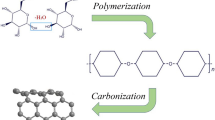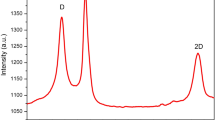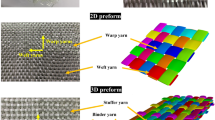Abstract
Accelerated lifetime prediction is the key technology to assure the safety and reliability of rubber products in automotive components. In the present study, carbon black (CB), which has been a conventional reinforcing filler in the rubber industry, was partially replaced by graphene in natural rubber (NR) composite system. Due to the superior intrinsic thermal conductivity of graphene, it is getting much attention to reduce heat build-up problem of vibration mount for longer lifetime in its demanding performance. Therefore this study not only focuses on the effect of graphene loading on mechanical properties of NR composites but also on the accelerated lifetime prediction of graphene-reinforced NR composites. Hardness and compressive properties were linearly increased as CB was partially replaced by graphene (1-5 phr; parts per hundred rubber) showing better reinforcing effect. In accelerated lifetime experiments, hardness and compression set were significantly changed after 24 h when the samples were exposed to 85 °C and 70 °C, respectively. From the relationship between thermal aging temperature and lifetime, Arrhenius plot using least square method was drawn to predict the lifetime of NR composites resulting that the activation energy reached at a maximum when 3 phr of graphene was filled in NR composite. Through the accelerated thermal aging test, lifetime prediction of graphene-reinforced NR composites were successfully drawn particularly focusing on compression set property which is one of the most dominant factors for the aging of vibration mount.

Similar content being viewed by others
References
J. E. Mark, B. Erman, and M. Roland, The Science and Technology of Rubber, Academic Press, Oxford, 2013.
M.–J. Wang, Rubber Chem. Technol., 71, 3 (1998).
G. Lake, Rubber Chem. Technol., 68, 3 (1995).
R. P. Brown, Rubber Product Failure, Smithers Rapra Publishing, Shrewsbury, 2002.
A. N. Gent, Engineering with Rubber: How to Design Rubber Components, Carl Hanser Verlag GmbH Co KG, Munich, 2012.
A. Medalia, Rubber Chem. Technol., 51, 437 (1978).
T. A. Vilgis and G. Heinrich, Macromolecules, 27, 26 (1994).
M. Klüppel, R. H. Schuster, and G. Heinrich, Rubber Chem. Technol., 70, 2 (1997).
J. L. Leblanc, Prog. Polym. Sci., 27, 4 (2002).
S. Merabia, P. Sotta, and D. R. Long, Macromolecules, 41, 21 (2008).
A. A. Gusev, Macromolecules, 39 18 (2006).
M. Arroyo, M. Lopez–Manchado, and B. Herrero, Polymer, 44, 8 (2003).
L. Bokobza, Polymer, 48, 17 (2007).
K. K. Sadasivuni, D. Ponnamma, S. Thomas, and Y. Grohens, Prog. Polym. Sci., 39, 4 (2014).
C. Lee, X. Wei, J. W. Kysar, and J. Hone, Science, 321, 5887 (2008).
K. S. Novoselov, A. K. Geim, S. V. Morozov, D. Jiang, Y. Zhang, S. V. Dubonos, I. V. Grigorieva, and A. A. Firsov, Science, 306, 5696 (2004).
A. A. Balandin, S. Ghosh, W. Bao, I. Calizo, D. Teweldebrhan, F. Miao, and C. N. Lau, Nano Lett., 8, 3 (2008).
Y. Song, J. Yu, L. Yu, F. E. Alam, W. Dai, C. Li, and N. Jiang, Mater. Des., 88, 950 (2015).
W. Xing, M. Tang, J. Wu, G. Huang, H. Li, Z. Lei, X. Fu, and H. Li, Compos. Sci. Technol., 99, 67 (2014).
C. S. Woo and H. S. Park, Eng. Failure Anal., 18, 7 (2011).
N. Ning, D. Cheng, J. Yang, L. Liu, M. Tian, Y. Wu, W. Wang, L. Zhang, and Y. Lu, Compos. Sci. Technol., 142, 214 (2017).
W. Mars and A. Fatemi, Rubber Chem. Technol., 77, 3 (2004).
Author information
Authors and Affiliations
Corresponding author
Additional information
Acknowledgment: This research was supported by Basic Science Research Program through the National Research Foundation of Korea (NRF) funded by the Ministry of Education (NRF-2018R1A2B2001565).
Rights and permissions
About this article
Cite this article
Kong, E., Yoon, B., Nam, JD. et al. Accelerated Aging and Lifetime Prediction of Graphene-Reinforced Natural Rubber Composites. Macromol. Res. 26, 998–1003 (2018). https://doi.org/10.1007/s13233-018-6131-z
Received:
Revised:
Accepted:
Published:
Issue Date:
DOI: https://doi.org/10.1007/s13233-018-6131-z




